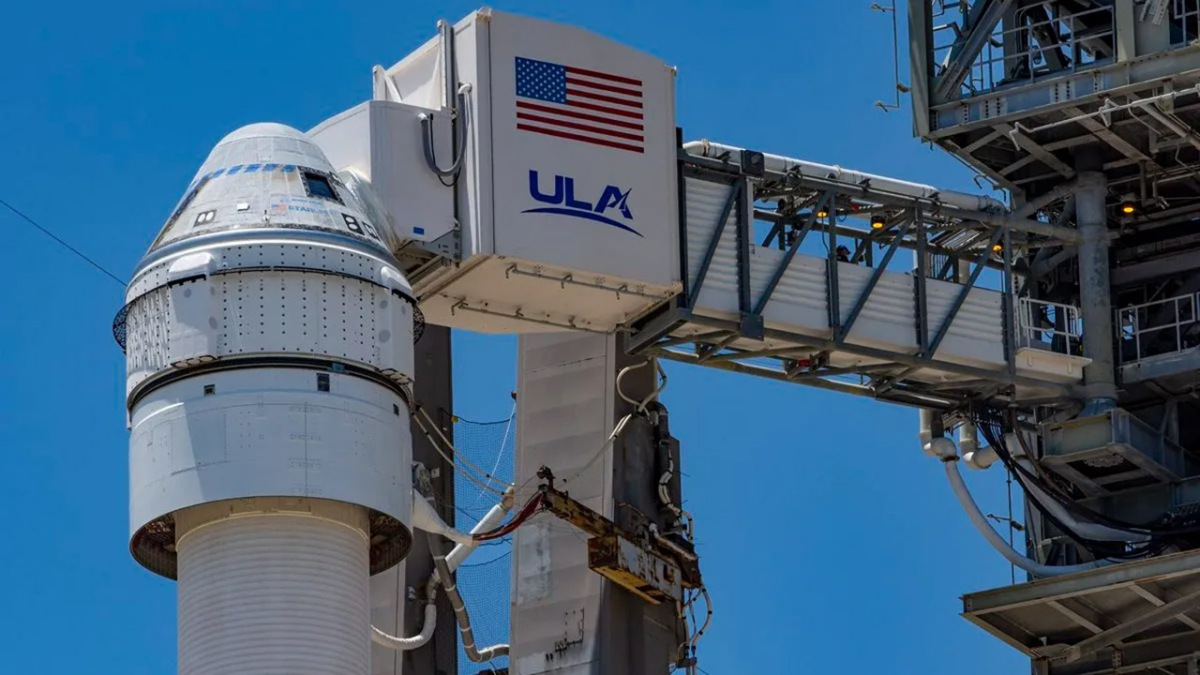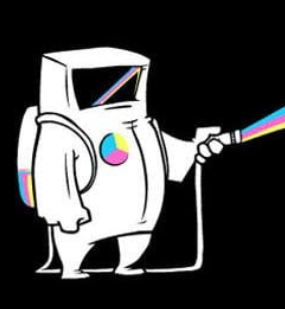Boeing and NASA are moving ahead with the upcoming Starliner demonstration launch despite an active helium leak. The launch is now on the books for Saturday, June 1, at 12:25 p.m. EDT. If all goes as planned, Starliner will rendezvous with the International Space Station the following day and return to Earth on June 10. If not, it will be another embarrassing setback for Boeing’s troubled spacecraft.
Technicians discovered helium escaping from the fuel system earlier this month after valve issues caused NASA to halt the last launch attempt. NASA said in a recent news conference that the extremely slow leak does not pose a danger to the spacecraft. This is based on an exhaustive inspection of Starliner, which was removed from the launchpad along with the Atlas V so the valve in ULA’s rocket could be swapped. It was then that the team noticed the helium leak in Starliner.
Even though the optics of launching with an active leak aren’t ideal for the troubled Boeing craft, NASA says engineers have done their due diligence during this multi-week pause. Every space launch has risk tolerances, and NASA has judged this one to be in bounds. Helium is a tiny atom that is difficult to fully contain—even the highly successful SpaceX Dragon has occasionally flown with small leaks. While helium is part of the propulsion system, this inert gas is not used as fuel. Helium is used to pressurize the system and ensure fuel is available to the spacecraft’s four “doghouse” thruster assemblies and the launch abort engines.
Have they considered submerging the spacecraft, to see where the bubbles come out? 🙃
The helium makes it float, so they got a guy to rub his spit on the rocket using his finger, but that process takes a long time so we’re just refilling the rocket in the meantime until we find it.
The last guy who submerged Boeing parts didn’t end up too well.
I’ve done it. It’s not as fun as you’d think.
I distinctly remember growing up hearing there’s not even a .01% margin for error on spacecraft. That they must be so durable to withstand the conditions of leaving/reentry and the shuddering vibrations. I realize it’s different, but the big fear is always having another Challenger. Challenger didn’t just break up, it exploded into 2 pieces on national television. " teacher going to space" had a TV in every classroom across the country watching it.
Helium seems used in the modern rocket to keep hot gas pipes separate from cold liquid fuel. 3 minutes before launch the system is charged and maintained by ground, just before ignition it’s disengaged and the system has to support itself. The helium on board only needs to stay pressurized for the 7 minutes or so it takes before the thrusters are spent, and purged, and that’s why they don’t view it as an issue. But still sounds like fuckass Boeing being ok gambling with lives while NASA shrugs - again.
The way that the NASA program worked was that failure was expected and redundancies were added where they could. NASA program engineers knew that any failure could be a PR nightmare and would result in their funding being cut.
Their margin for error was small but because error-handling was built into the system.
If only that philosophy existed today.
NASA landed on the moon with 1960’s technology, not because it was easy in the 60’s, but because every single aspect of the mission was planned, tested, rehearsed, and made as simple as possible where it couldn’t have a redundancy. The only time something went really wrong was when a faulty tank exploded on Apollo 13, but due to having an entirely separate craft in the form of the lander attached, the astronauts were able to ride out the failure all the way around the moon and back to earth. Oh yeah, even the orbit they picked would let the whole spacecraft fly around the moon and come back to earth without having to do any engine burns.
Look at planned missions today. Launch the Human Landing system. Have it sit in space for an unknown amount of time while anywhere from 6 to 12 refueling rockets are launched to refuel the lander. Relight lander engines in earth orbit, go to moon, relight engines again to orbit the moon. Launch the Orion spacecraft with crew on board, this also must burns its engines once at the moon to enter lunar orbit. Rendezvous and dock with the HLS, transfer crew and supplies over. Undock Orion, relight HLS engines for a 4th time to deorbit and land HLS. Use an elevator to get from HLS to the lunar surface for the next week or so. Board the HLS, which needed at least 6 refueling tankers full of cryogenic fuel to get to the moon and has now been sitting on the 200 degree lunar surface for a week, and light the engines a 5th time to take off and enter lunar orbit. Rendezvous with Orion, and return home. NASA has demonstrated that Orion can do the mission. But HLS has not even shown the technical capability of doing this. Its engines have never been relit in space, it has never sat in space for a week to see what happens to the engines. The entire interior isn’t even built yet and NASA is just using a 9 meter steel circle to train astronauts on the airlock section because no one knows what it will look like.
This mission couldn’t be more complicated if you tried. Apollo needed a total of 1 engine relight on the transfer stage, and 2 engine relights on the command module: one to enter lunar orbit, and one to leave and return to earth. The lander used pressure fed engines that only needed to work once each. One engine got them from orbit to the surface, one got them from the surface to orbit. If the Ascent engine didn’t work, NASA had plans for everything from literally jump starting it with the descent module’s batteries like it’s a dead car, to having an astronaut use bolt cutters to cut the safety pins on the engine so the valves can be manually opened.
If your car doesn’t start in the morning, you might call off work and get it towed to a mechanic. What do you do when you’re trying to leave the moon, and your rocket engines won’t light because they’ve been sitting in space for almost 2 weeks? The nearest rocket engineer is 240,000 miles away back on earth, and so are all the spare parts. And what do you do if only some of those engines light, and the others either don’t or explode while you’re on a suborbital trajectory. Complexity kills on harsh environments. Space is one of the harshest environment we’ve ever been in, so things need to be as simple as possible and known to work.
The philosophy still exists today at NASA proper.
Blue Origin and SpaceX don’t need to have that philosophy. Because their owners are having a dick measuring contest and have literal billions to literally burn.
The budget constraints on NASA during the Apollo missions made success a requirement. They couldn’t afford to waste money or even look like they are wasting money. Even early tests where NASA rockets were burning and exploding they had to justify to Congress that they were learning.
It helped that the “red scare” kept the public interested in space exploration because it was about beating the Soviet Union.
But when Blue Origin and SpaceX have to answer to just a billionaire, they can get away with failure after failure. It’s probably cheaper for them.
If it really did, then nasa would not have committed to this hare brained scheme of musk’s.
The fact that the SpaceX proposal was accepted by an interim director who then went to work at SpaceX 6 months later, and no one has investigated this or challenged the acceptance of this contract tells me that safety is clearly not the priority. If safety was the priority, the new director would have looked at the current proposal and demanded a renegotiation or reconsideration.
Challenger’s hardware was flown in out of spec conditions.
Morton Thiokol has entered the chat
Morton Thiokol
you mean Allan McDonald?
Interestingly enough:
The focus of the commission’s investigation shifted to the booster rocket O-rings, and the concerns and efforts of McDonald and his engineers to stop the launch which were ignored by NASA officials. McDonald’s comments to the commission led to him temporarily losing his position with Morton Thiokol, being demoted.
The presidential commission was alarmed at Morton Thiokol’s decision to punish McDonald and introduced a joint resolution that threatened to prevent Morton Thiokol from receiving further contracts from NASA. Given the commission’s threat, Morton Thiokol promoted McDonald to vice president and tasked him with improving the rocket joints that failed during Challenger’s launch.
Perhaps the U.S. govt needs to step in again to right the ship at boeing. Well, I’m being coy, of course the U.S. gov’t has to step up and do something. Companies should never be some sacred cow that we’re afraid of upsetting.






